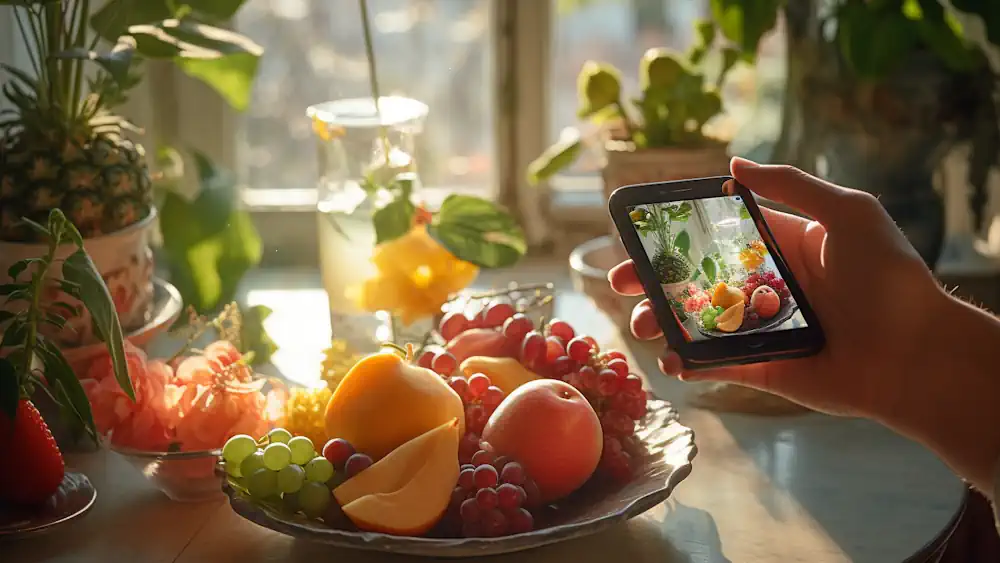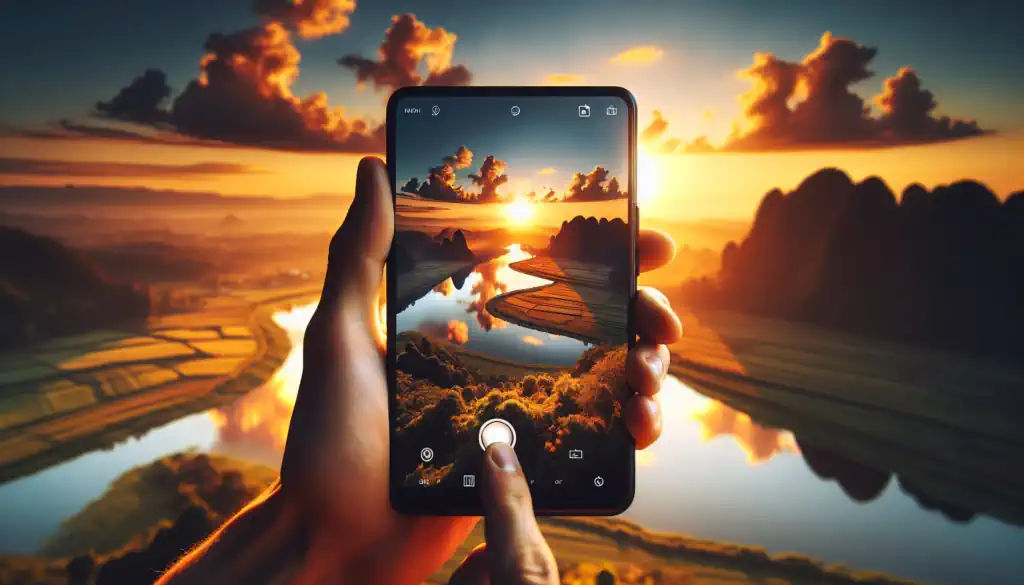Looking to up your phone photography game? Look no further! In this article, you’ll discover ten practical tips that will help you capture stunning photos using just your smartphone. From mastering composition techniques to utilizing lighting to your advantage, these tips are guaranteed to elevate your photography skills and make your Instagram followers green with envy. So grab your phone and get ready to take your photography to new heights!
1. Choose the Right Camera App
When it comes to capturing great photos with your phone, choosing the right camera app can make a world of difference. While the default camera app on your phone may be convenient, consider using a dedicated camera app for a better photography experience. These apps often offer more manual control over settings such as exposure, ISO, and white balance, allowing you to fine-tune your photos to your liking. Take some time to explore the various camera apps available for your device and find one that suits your needs and preferences.
Use a dedicated camera app
While the default camera app on your phone may be convenient, it may not offer the advanced features and manual controls that a dedicated camera app can provide. These apps often have additional features like exposure compensation, focus lock, and a range of shooting modes. By using a dedicated camera app, you can have more control over your phone’s camera settings and achieve better results.
Experiment with manual settings
Once you have chosen a dedicated camera app, don’t be afraid to experiment with the manual settings. Play around with the exposure compensation to adjust the brightness of your photos, try different white balance settings to enhance the colors, and experiment with the ISO to control the level of noise in your images. By exploring these manual settings, you can take your phone photography skills to the next level and capture stunning images with your device.
Try out different camera apps
Don’t limit yourself to just one camera app. There are plenty of options available on both the App Store and Google Play Store, each with its own unique features and user interface. Try out different camera apps and see which one you like best. Some apps may excel in specific areas, such as low-light photography or capturing action shots. By exploring different camera apps, you can find the one that best suits your needs and helps you capture the photos you envision.
2. Clean Your Lens
One often overlooked aspect of phone photography is keeping your lens clean. Smudges and fingerprints on your lens can significantly affect the quality of your photos, resulting in blur or reduced clarity. To ensure you always have a clean lens, regularly wipe it with a microfiber cloth. This type of cloth is gentle on the lens surface and can remove dirt and smudges effectively. Avoid using harsh chemicals or abrasive materials, as they can damage the lens coating. By keeping your lens clean, you can capture crystal-clear photos without any unwanted blemishes.
Remove smudges and fingerprints
Before you start taking photos, take a moment to inspect your phone’s camera lens. If you notice any smudges or fingerprints, gently wipe them away with a soft cloth. These marks can negatively impact the quality of your photos, so it’s essential to clean your lens regularly. By removing smudges and fingerprints, you’ll be able to capture sharp and clear images that truly showcase your subject.
Use a microfiber cloth
When it comes to cleaning your camera lens, using the right tool is crucial. A microfiber cloth is the best choice for this task. Its soft material is excellent for gently removing dirt, smudges, and fingerprints from the lens surface. Make sure to keep a microfiber cloth in your bag or pocket whenever you go out to take photos. By regularly cleaning your lens with a microfiber cloth, you can ensure that your photos are consistently crisp and free from unwanted marks.
Avoid using harsh chemicals
While it may be tempting to use cleaning solutions or abrasive materials to clean your lens, it’s best to avoid them. Harsh chemicals can damage the delicate lens coating, resulting in reduced image quality. Similarly, abrasive materials can leave scratches on your lens, which can be difficult or impossible to fix. Stick to using a microfiber cloth as it is safe and effective for cleaning your lens. Remember, a clean lens is the first step towards capturing stunning photos with your phone.
3. Find Good Lighting
Lighting plays a crucial role in photography, and phone photography is no exception. Finding good lighting conditions can greatly enhance the quality of your photos, making them more vibrant and visually appealing. Here are some tips to help you find the perfect lighting for your phone photography.

Use natural light whenever possible
Natural light is often the most flattering and versatile light source for photography. When shooting outdoors, try to take advantage of the natural light available. Soft, diffused light on a cloudy day can create a beautiful, even illumination that is perfect for portraits or close-up shots. During golden hour, which occurs during the first and last hours of sunlight, the warm and gentle light can give your photos a magical quality. By using natural light, you can capture stunning photos that truly showcase your subject.
Avoid harsh shadows and direct sunlight
While natural light is generally beneficial for photography, it’s crucial to be mindful of harsh shadows and direct sunlight. These lighting conditions can create unflattering contrasts and result in overexposed or underexposed photos. When shooting outdoors, look for shaded areas or areas with diffused light to avoid harsh shadows. If you’re photographing on a sunny day, position your subjects so that they are not directly facing the sun to prevent squinting and harsh shadows. By being mindful of the lighting conditions, you can ensure that your subject is well-illuminated and that your photos are balanced and visually appealing.
Consider using artificial lighting in low-light situations
In low-light situations, such as indoors or during nighttime, it may be necessary to use artificial lighting to capture well-exposed photos. Experiment with different lighting options, such as table lamps, LED lights, or even a dedicated photography light. By adding artificial light sources, you can ensure that your subject is well-illuminated and that your photos have sufficient brightness and clarity. Remember to adjust the color temperature of the lights to avoid unnatural color casts. With the right lighting setup, you can capture stunning photos even in challenging lighting conditions.
4. Compose Your Shot
Composition is the art of arranging the elements within a frame to create a visually pleasing and compelling image. By paying attention to the composition of your photos, you can take your phone photography to the next level. Here are some tips to help you compose your shots effectively.
Use the rule of thirds
The rule of thirds is a fundamental composition technique that involves dividing the frame into a 3×3 grid. Imagine two horizontal and two vertical lines crossing to create nine equal sections. The rule of thirds suggests that you should position your subject along these gridlines or at the intersections, rather than in the center of the frame. This creates a more visually interesting composition and draws the viewer’s eye towards the subject. By using the rule of thirds, you can create balanced and compelling photos that capture the viewer’s attention.
Experiment with different angles and perspectives
Don’t be afraid to experiment with different angles and perspectives when composing your shots. Instead of always shooting from eye level, try shooting from a low angle or a higher vantage point. Changing your perspective can provide a fresh and unique take on your subjects, making your photos stand out. For example, getting down low and shooting upwards can make ordinary objects appear more imposing while shooting from a higher angle can provide a unique view of a scene. Embrace creativity and don’t be afraid to think outside the box when it comes to composing your shots.
Pay attention to the background
While it’s essential to focus on your subject, it’s equally important to pay attention to the background of your photos. The background can either enhance or detract from your subject, so aim for a clean and uncluttered background whenever possible. Look for simple and complementary backgrounds that won’t compete for attention with your subject. Additionally, be mindful of any distracting elements, such as poles or wires, and adjust your composition accordingly. By paying attention to the background, you can ensure that your subject remains the focal point of your photo.

5. Focus and Exposure
Proper focus and exposure are vital for capturing sharp and well-exposed photos. Luckily, most phone cameras now offer tools to help you achieve the desired focus and exposure. Here are some tips for getting the best results.
Tap on the subject to focus
When framing your shot, tap on the subject on your phone’s screen to set the focus. This tells the camera where to prioritize the focus and ensures that your subject appears sharp and clear. Take a moment to ensure that the focus is set correctly before capturing the photo. This is especially important when shooting subjects that are close to the camera or have intricate details. By taking control of the focus, you can capture photos with tack-sharp details and make sure your subject is the center of attention.
Adjust the exposure manually if needed
Camera apps often provide the option to adjust the exposure manually. This can be particularly useful in challenging lighting situations where the camera’s automatic exposure may not accurately capture the desired brightness levels. Experiment with adjusting the exposure manually to achieve the desired level of brightness in your photos. Increase the exposure for darker scenes or decrease it for brighter scenes. By manually controlling the exposure, you can ensure that your photos are well-exposed and accurately represent the scene you are capturing.
Use HDR mode for high-contrast scenes
High-contrast scenes, where there are both very bright and very dark areas, can be challenging to capture accurately. Consider using the HDR (High Dynamic Range) mode on your phone’s camera app in such situations. HDR mode captures multiple exposures of the same scene and then combines them to create a well-exposed image with enhanced dynamic range. This can help retain details in both the highlights and shadows, resulting in a more balanced and visually appealing photo. Experiment with HDR mode to capture stunning photos in high-contrast scenes.

6. Use Gridlines for Alignment
Gridlines are a handy tool for achieving better alignment and composition in your photos. Here’s how you can utilize gridlines effectively.
Enable gridlines in your camera settings
Before you start shooting, make sure to enable gridlines in your camera settings. This feature overlays a 3×3 grid on your phone’s screen, making it easier to align your subject and compose your shot. Enabling gridlines can help you follow the rule of thirds and achieve better overall composition.
Align your subject along the gridlines
When using gridlines, aim to position your subject along the gridlines or at the intersections. This creates a visually pleasing composition and draws the viewer’s eye towards the subject. By aligning your subject with the gridlines, you can create a sense of balance and harmony in your photos.
Utilize the intersections for points of interest
In addition to aligning your subject along the gridlines, consider utilizing the intersections of the gridlines as points of interest in your composition. Placing your subject at one of these intersections can create a focal point and add visual interest to your photo. It’s a simple technique that can make a significant impact on your compositions.
7. Use the Rule of Thirds
The rule of thirds is a fundamental principle in photography that can help create visually appealing and balanced compositions. Here’s how you can effectively utilize the rule of thirds in your phone photography.
Divide your frame into a 3×3 grid
Before taking a photo, imagine dividing your frame into a 3×3 grid with two horizontal and two vertical lines. This creates nine equal sections that serve as guidelines for positioning your subject and other elements. By mentally dividing your frame into thirds, you can create a more visually interesting composition.
Place subjects along the gridlines or intersections
When applying the rule of thirds, aim to position your subjects along the gridlines or at the intersections. This creates a more balanced and visually appealing composition compared to placing your subject at the center of the frame. By placing your subject at one of these points, you can create a stronger focal point and draw the viewer’s eye towards it.
Create balance and visual interest
Utilizing the rule of thirds can help you create a sense of balance and visual interest in your photos. By understanding how to position your subjects within the frame, you can compose your shots in a way that is visually appealing and engaging. Experiment with different compositions and placements, and don’t be afraid to break the rule of thirds when it suits your creative vision.
8. Experiment with Different Perspectives
One of the advantages of phone photography is that it allows you to experiment with different perspectives easily. Here are some tips for capturing unique and creative shots by changing your perspective.
Try shooting from a low or a high angle
Instead of always shooting from eye level, try changing your shooting height to capture more interesting perspectives. Getting down low and shooting upwards can make your subject appear more imposing or give a sense of grandeur. Conversely, shooting from a higher angle can offer a unique view of a scene and add a different dimension to your photos. Don’t be afraid to crouch down, climb a tree, or even lie on the ground to capture a different perspective.
Capture unique viewpoints and details
When looking for interesting subjects to photograph, pay attention to unique viewpoints or details that others may overlook. Explore your surroundings and search for angles or small details that can add interest to your photos. It could be an unusual reflection, a pattern, or a texture that you find intriguing. By capturing these unique viewpoints and details, you can create visually compelling images that stand out from the crowd.

Think outside the box for creative shots
Phone photography allows for endless creative possibilities, so don’t be afraid to think outside the box and experiment with unconventional techniques. Try shooting through objects to create interesting frames or experiment with abstract compositions. Play with reflections, shadows, and silhouettes to add a touch of mystery to your photos. Embrace your creativity and have fun exploring different techniques and perspectives to capture truly unique and captivating shots.
9. Use the Panorama Mode
If you want to capture wide, sweeping landscapes or impressive buildings, consider utilizing your phone’s panorama mode. Panorama mode allows you to capture a larger field of view by stitching together multiple images. Here’s how you can utilize this feature effectively.
Capture wide landscapes or buildings
Panorama mode is perfect for capturing wide landscapes or tall buildings that cannot be fully captured in a single shot. To utilize this feature, simply activate your phone’s panorama mode and swipe it across the scene while keeping the camera steady. The camera will automatically capture multiple images and stitch them together to create a seamless panoramic photo.
Follow the on-screen guide for smooth panning
To ensure a smooth panorama, pay attention to the on-screen guide that appears on your phone’s display when using the panorama mode. The guide helps you keep the camera steady and prevents shaky or uneven panoramas. Follow the guide as you pan across the scene to create a well-aligned and visually pleasing panoramic photo.
Stitch together multiple images for a larger panorama
If the panorama mode on your phone doesn’t capture a wide enough scene, you can create an even larger panorama by stitching together multiple panoramas. Simply capture one panorama, then move the camera slightly and capture another one that overlaps with the previous image. Repeat this process until you have captured the entire scene. Later, you can use photo editing software or an app to stitch the individual panoramas together into one large panorama. This technique allows you to capture even wider scenes and create stunning panoramic photos.
10. Edit your Photos
After capturing your photos, don’t be afraid to edit them to enhance their visual impact. Editing apps can help you adjust various aspects of your photos, such as brightness, contrast, and saturation. Here are some tips for effectively editing your phone photos.
Use editing apps for post-processing
There are plenty of editing apps available for both iOS and Android devices that allow you to fine-tune your photos. These apps offer a range of editing tools, filters, and effects to help you transform your photos into stunning works of art. Explore different editing apps and find one that suits your needs and preferences.
Adjust brightness, contrast, and saturation
After capturing your photos, consider adjusting the brightness, contrast, and saturation to enhance their visual impact. Brightening up a slightly underexposed photo, increasing the contrast to add depth, or boosting the saturation to make colors pop can make a significant difference in the overall look of your photos. However, be careful not to overdo it and maintain a natural and realistic appearance.
Crop and straighten your images
In addition to adjusting the brightness, contrast, and saturation, cropping and straightening your images can help improve the composition. By cropping unwanted elements and tightening the framing, you can draw attention to your subject and improve the overall visual balance. Additionally, straightening your images can correct any tilting or crooked horizons, resulting in a more polished and professional look.
By following these tips and techniques, you can improve your phone photography skills and take better photos with your device. Remember to explore different camera apps, keep your lens clean, find good lighting conditions, compose your shots effectively, focus and adjust exposure, use gridlines for alignment, experiment with different perspectives, utilize panorama mode and edit your photos to enhance their visual impact. With practice and a creative eye, you’ll be capturing stunning photos that you can proudly share with others. Happy shooting!
